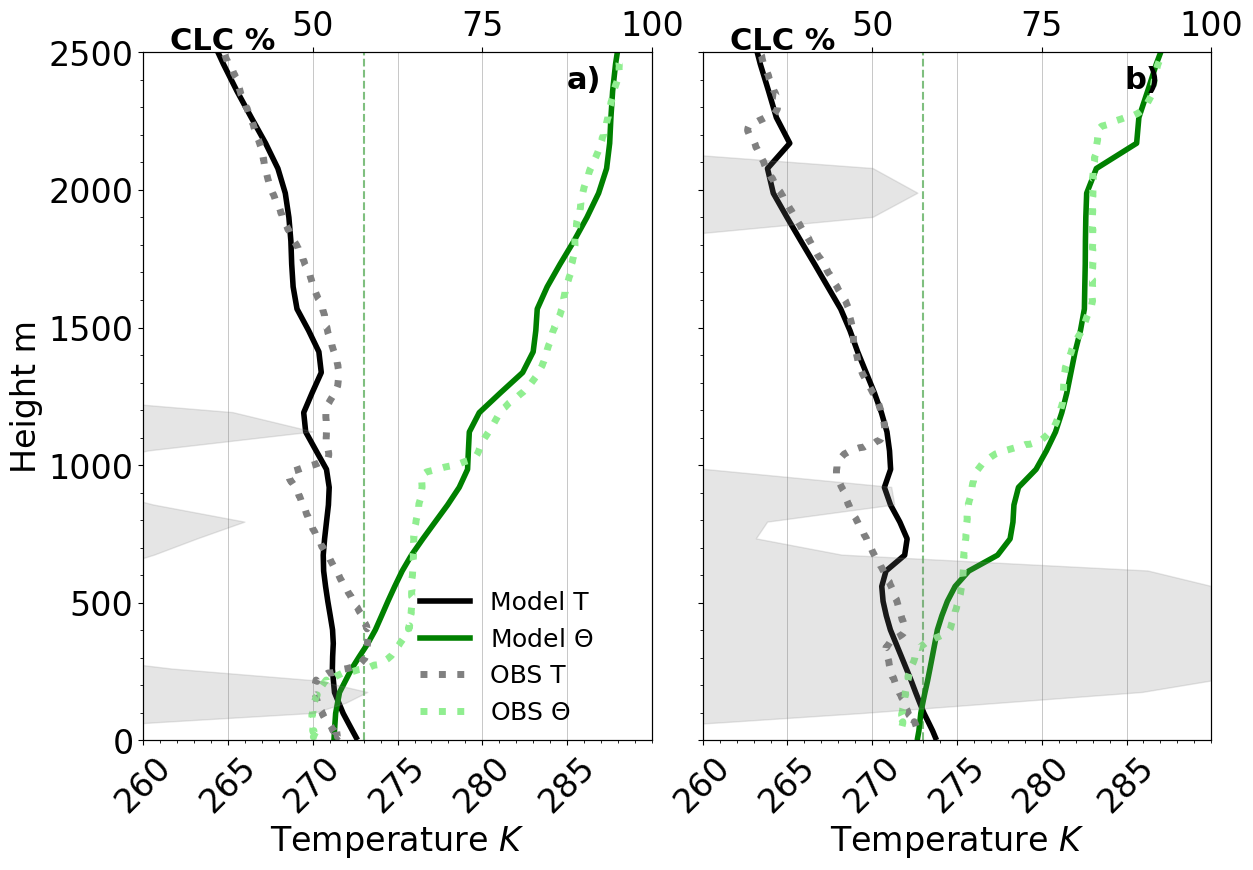How well can a weather model represent Arctic multilayer clouds?
Multilayer clouds are defined as vertically stacked cloud layers separated by a clear interstice. They are common in the Arctic but are underrepresented in the scientific literature. To study multilayer clouds and explore the model representation of them, we set up the ICON model in a limited area mode and simulate clouds in the high-Arctic during the 1st-3rd September 2020 evaluated using data from the MOSAiC campaign (https://mosaic-expedition.org/). We find multilayer clouds challenging to accurately represent in terms of vertical layering due to a model misrepresentation of the thermodynamic vertical structure (Fig. 1).

The observed and modelled clouds are shown in Fig. 2. The vertical layering of the clouds differs substantially due to differences in the thermodynamic profiles. Furthermore, we find that the model is severely underestimating the observed cloud ice and investigate methods to improve the representation. Aerosols enable cloud formation and parameterisations that represent these in the model are tuned for European levels of aerosol concentrations. To make the parameterisations more appropriate for an Arctic aerosol distribution, we constrain the model to observed aerosol concentrations measured at the MOSAiC site. This allows for cloud ice formation at warmer (but subzero) temperatures (Fig. 2c). However, the model is still underestimating the amount of cloud ice present and we investigate pathways to more accurately capture this. A large increase (factor of 1 million) of the aerosols capable of ice formation (ice nucleating particles, INP) is required (Fig. 2d) to capture observed levels of ice. The inclusion of secondary ice production (SIP) is another, and more realistic, pathway to produce more ice in the model. SIP mechanisms generate cloud ice through interactions between cloud liquid and frozen hydrometeors, such as cloud ice, snow, and graupel, and effectively increase the ice concentrations within the clouds. This process is highly governed by the aerosol concentration and to accurately reproduce observed cloud ice, additional aerosols must be included together with the SIP (Fig. 2e).

As multilayer clouds are frequent in the Arctic, accurate representation of these clouds is required to correctly project cloud impacts on the melting sea ice and the future state of the Arctic climate system.
Reference:
Wallentin, G., et al. Arctic Multilayer Clouds Require Accurate Thermodynamic Profiles and Efficient Primary and Secondary Ice Processes for a Realistic Structure and Composition, EGUsphere [preprint], https://doi.org/10.5194/egusphere-2024-2988, 2024.
Working group: Cloud Physics
